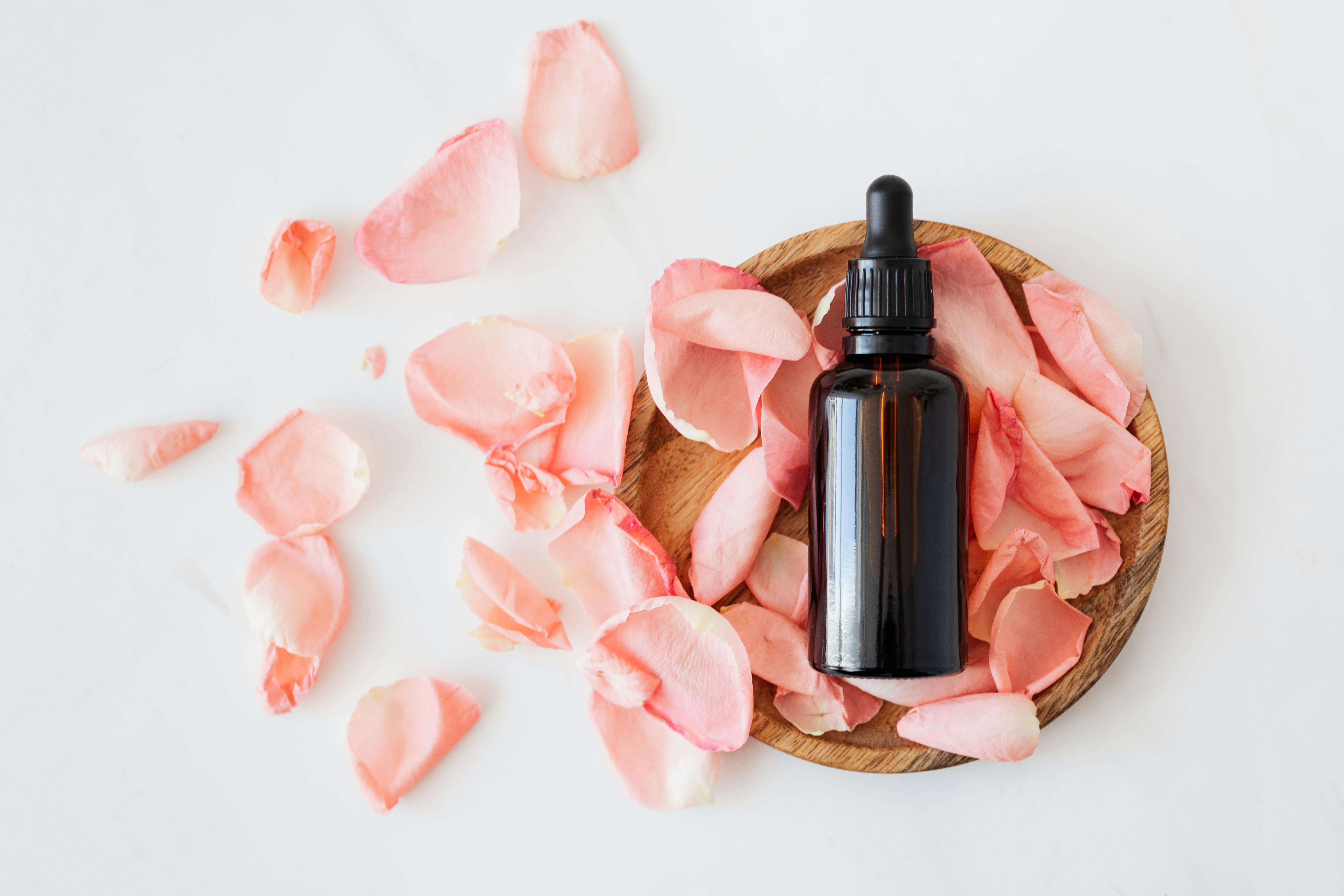Essential oils are a wonderful way to improve your life and provide many health benefits. But, purchasing essential oils can be expensive and it may not always be possible to get the exact oil you need. Fortunately, you can make essential oils without a distiller. This article will provide you with the information you need to make your own essential oils at home without a distiller.Essential oils are highly concentrated plant extracts that have been obtained through a process of distillation or cold pressing. These highly aromatic, volatile liquids contain the fragrance, taste, and medicinal properties of the plant they were derived from and are used in various applications including aromatherapy, massage, natural skin care, and home remedies. Essential oils can be used individually or blended to create unique and powerful combinations that can help support the body’s own natural healing abilities.
Extraction Process for Essential Oils
The extraction process for essential oils involves the use of various methods to extract the oil from the plant material. The most common extraction methods are steam distillation, solvent extraction, expression, and carbon dioxide (CO2) extraction. Each method has its own advantages and disadvantages and certain oils are better suited to certain methods of extraction.
Steam distillation is the most commonly used method for extracting essential oils from plants. This process involves boiling water which creates steam that passes through the plant material carrying with it the essential oil vapors. The vapors then pass through a condenser tube which cools them back into a liquid form, creating an essential oil hydrosol.
Solvent extraction uses solvents such as hexane or ethanol to extract essential oils from plant material. This method is often used when steam distillation cannot be used because it can extract more delicate aroma compounds from the plant material. The solvents are then removed from the oil leaving behind a concentrated product that contains both the essential oil and other aromatic compounds found in the plant material.
Expression is a method of mechanical pressing used to extract essential oils from citrus fruits such as oranges, lemons, and grapefruits. This process involves pressing or grinding the rinds of these fruits to release their volatile aromatic compounds which are then collected and distilled into an essential oil.
CO2 extraction is a newer method of extracting essential oils using pressurized carbon dioxide instead of traditional solvents or steam distillation. This method yields higher quality essential oils with very little contamination compared to traditional methods as there is no risk of thermal degradation or exposure to chemicals during extraction. CO2 extracts also contain more volatile constituents than other forms of extracts due to their low boiling points, making them ideal for perfumery applications as well as therapeutic uses in aromatherapy products.
Overall, each method has its own advantages and disadvantages depending on what type of oil you are trying to extract and what type of product you are trying to create with it in mind. It’s important to research each type of extraction method before deciding on one for your specific project in order to get optimal results for your desired outcome!
How To Make Essential Oils Without A Distiller
Making essential oils without a distiller is possible, but requires a bit more work. The most common way to make essential oils without a distiller is through steam distillation. This process uses heat and pressure to separate the oil-bearing molecules from the plant material and capture the evaporated oil in a container. The plant material is placed in a still, which is then filled with steam. As the steam rises, it carries the oil-bearing molecules with it, separating them from the plant material. The steam then condenses and collects in a separate container, along with the essential oil it has extracted from the plant material.
Another way to make essential oils without a distiller is through cold pressing. This method uses mechanical pressure to extract the oils from citrus fruits such as oranges, lemons and limes. The process involves squeezing or grinding the fruits until all of their juice has been extracted. The remaining pulp is then pressed in order to force out any remaining oil droplets. These droplets can then be collected and stored for use in aromatherapy or other applications.
Finally, it’s also possible to make essential oils without a distiller using solvent extraction. This method involves using chemical solvents such as alcohol or hexane to extract volatile compounds from plants. The solvents are usually heated up so that they can more easily penetrate the cell walls of the plants and release their valuable compounds. Once these compounds are released, they are collected and stored for later use.
Making essential oils without a distiller may take more effort than using one, but it can still be done if you have access to all of the necessary equipment and materials. With some patience and practice, anyone can learn how to make their own essential oils at home!
Distillation
Distillation is one of the most common methods to extract essential oils. This method involves heating the plant material and then capturing and condensing the resulting vapor. The vapor consists of both water and oil, and when cooled, it separates into two layers, with the oil floating on top of the water. This can then be separated out and collected. It is important to note that this process should only be done under controlled conditions in order to preserve the integrity and quality of the essential oil.
Expression
Expression is another method to extract essential oils from plants. It is also known as cold pressing, as it does not involve any heat or chemicals. This method is typically used for citrus fruits such as oranges, lemons and limes. The rinds of these fruits are pressed in order to release their oil-containing cells, which are then collected for further processing. Expression is a very efficient way to extract essential oils from plant material.
Solvent Extraction
Solvent extraction is a more complex process than distillation or expression, but it can be used to extract more delicate compounds from plant material that would otherwise be damaged by heat or pressure. In this process, a solvent such as hexane or ethanol is used to dissolve the desired compounds in the plant material. The resulting solution is then filtered and evaporated in order to separate out the essential oil.
Steam Distillation
Steam distillation combines both distillation and expression methods in order to extract essential oils from plant material. In this process, steam is passed through the plant material in order to release its volatile compounds, which are then condensed into a liquid that contains both water and oil components. This liquid can then be separated into its individual components using various techniques such as fractional distillation or evaporation.
Overall, there are several different methods available for extracting essential oils from plants including distillation, expression, solvent extraction and steam distillation. Each method has its own advantages and disadvantages so it’s important to consider all factors before deciding which method will best suit your needs.
Cold Pressing Method To Extract Essential Oils
The cold pressing method is a popular way of extracting essential oils from plants and herbs. This method involves pressing and grinding the plant material to extract the essential oils. The result is a pure, high-quality essential oil that retains all of its natural healing properties. The cold pressing technique is used to extract essential oils from many different types of plants, including citrus fruits, conifers, flowers, herbs, and spices.
The process begins by carefully selecting the plant material for use in the cold pressing process. The plant material should be fresh and free from any contaminants that could affect the quality of the oil extracted. Once the plant material has been selected, it is cut into small pieces and placed into a specialized machine called a “cold press.” This machine uses mechanical pressure to extract the volatile oils from the plant material. The pressure applied ranges from 1-2 tons per square inch (psi).
Once the pressure has been applied, the temperature of the oil is slowly increased to around 100°C (212°F). During this heating process, some of the volatile compounds are released into a container known as an “Essential Oil Extractor” where they are collected in liquid form. After this process is complete, any remaining solids are filtered out and discarded.
The resulting essential oil has a strong aroma and can be used for various purposes such as aromatherapy or medical treatments. Because cold pressing does not involve any chemical extraction processes, it produces an oil that has retained all of its natural healing properties. Additionally, because no heat or chemicals are used during this extraction process, cold-pressed essential oils tend to have higher concentrations of active ingredients than those extracted using other methods such as steam distillation or solvent extraction.
Overall, cold pressing is an effective way to extract high quality essential oils without damaging them in any way. This ensures that you get pure therapeutic grade oil with all its natural benefits intact!

Steam Distillation Method To Extract Essential Oils
Steam distillation is a process used to extract essential oils from plant material. This method involves the use of steam to release the volatile compounds in the plant material and then condensing them in a separate vessel. The condensed fluid contains both the essential oil and water, so it must be separated by either a simple distillation or a more complex fractional distillation process. Steam distillation is one of the oldest methods used for extracting essential oils from plants and continues to be popular today due to its efficiency and effectiveness. It also offers some advantages over other methods such as cold pressing, including the ability to extract compounds that are otherwise difficult to obtain.
The steam distillation process begins by placing plant material in a still, which is then sealed. Steam is then passed through the still, releasing volatile compounds from the plant material into the air. As these compounds move through the air, they are cooled and condensed into liquid form in a separate vessel. This liquid contains both essential oils and water, so it must be separated before use. This is usually done through either simple or fractional distillation processes.
The advantages of using steam distillation for extracting essential oils include efficiency, effectiveness, cost savings and safety. Since this method does not involve any harsh chemicals or solvents, it is considered safe for use around pets and children. Additionally, since most of the time spent on this process is for cooling and condensing rather than extraction itself, it tends to be faster than other methods such as cold pressing or solvent extraction. It also tends to require less energy than other methods since only steam needs to be heated up initially.
Steam distillation has been used for centuries to extract essential oils from plants with great success; however there are some potential drawbacks that should be taken into consideration when deciding which method of extraction is best suited for your needs. For instance, some compounds can become damaged when exposed to high temperatures which may affect their quality and potency; additionally there may be certain circumstances where steam distillation may not be suitable due to concerns with contamination or purity of product.
Overall though, steam distillation remains one of the most popular methods used today for extracting high quality essential oils from plant material due its effectiveness, safety and efficiency.
Solvent Extraction Method To Extract Essential Oils
Solvent extraction is a method of extracting essential oils from plants using solvents such as hexane, ethanol, and isopropanol. The process involves the use of a heated solvent to extract the oil from the plant material. The solvent is then removed, leaving behind the essential oil. This method is often used for high-value oils such as jasmine and rose, as it yields a very high-quality product. It also has the advantage of being able to extract both volatile and non-volatile components of the plant material.
The process begins with a dry or partially dry plant material, which is ground into a powder or other small particles that are easier to work with. The ground material is placed in an extraction vessel along with the chosen solvent. The vessel is then heated and agitated, allowing the solvent to separate out the essential oil from the plant material.
Once the desired amount of oil has been extracted, it must be separated from the solvent. This can be done by cooling and filtering the mixture or by using steam distillation to remove any remaining solvent vapors. Once all traces of solvent have been removed from the oil, it can be used in its pure form or further processed for use in cosmetics or other products.
Solvent extraction can yield very high-quality essential oils, but it does have some drawbacks. It requires expensive equipment and specialized knowledge to ensure proper operation and safety during use. Additionally, there are some environmental concerns related to its use due to potential contamination of soil and water sources with leftover solvents used in this method.
Despite these drawbacks, solvent extraction remains one of the most popular methods for producing essential oils due to its ability to yield high-quality results quickly and efficiently. With proper training and safety precautions in place, this method can be an efficient way to extract pure essential oils for use in various products.
The Benefits Of Making Essential Oils Without A Distiller
Making essential oils without a distiller can be a great way to produce natural, high-quality essential oils for aromatherapy or other uses. By avoiding the use of a distiller, you can save time and money while still producing essential oils that are of the highest quality. Here are some of the benefits of making essential oils without a distiller:
1. Cost savings – Distillation is an energy-intensive process that requires specialized equipment, which can be expensive to purchase and operate. By avoiding the use of a distiller, you can save on costs associated with purchasing and maintaining the equipment.
2. Quality – Essential oils produced without a distiller are often of higher quality than those produced with distillation. This is because the heat used in distillation can degrade the oil’s compounds and cause it to lose its therapeutic benefits.
3. Simplicity – Making essential oils without a distiller is much simpler than using a distiller. All you need is the basic ingredients (i.e., plants or flowers), water, and heat source, and you can easily make your own essential oil in your own home.
4. Accessibility – The materials necessary for making your own essential oil are widely available and easy to obtain from local stores or online retailers. This makes it easy to make your own essential oil without having to invest in expensive equipment or tools.
Overall, making essential oils without a distiller is an excellent way to produce high-quality essential oils at an affordable cost while avoiding the complexity of using specialized equipment such as a distiller.

Conclusion
Making essential oils without a distiller is possible, but it requires more effort and time. The process of making your own essential oil involves heating the plant material with fat or alcohol to release the volatile compounds that make up the oil. This method is called enfleurage and produces a very low yield of essential oil. The other methods such as steam distillation and cold-pressed extraction require specialized equipment and knowledge in order to achieve a higher yield of essential oil with greater purity.
For those who wish to make their own essential oils without a distiller, they should take into consideration the time, effort, and resources they have available before embarking on such a project. After all, making your own essential oils can be an extremely rewarding experience, both for yourself and for others who may benefit from your creations.

